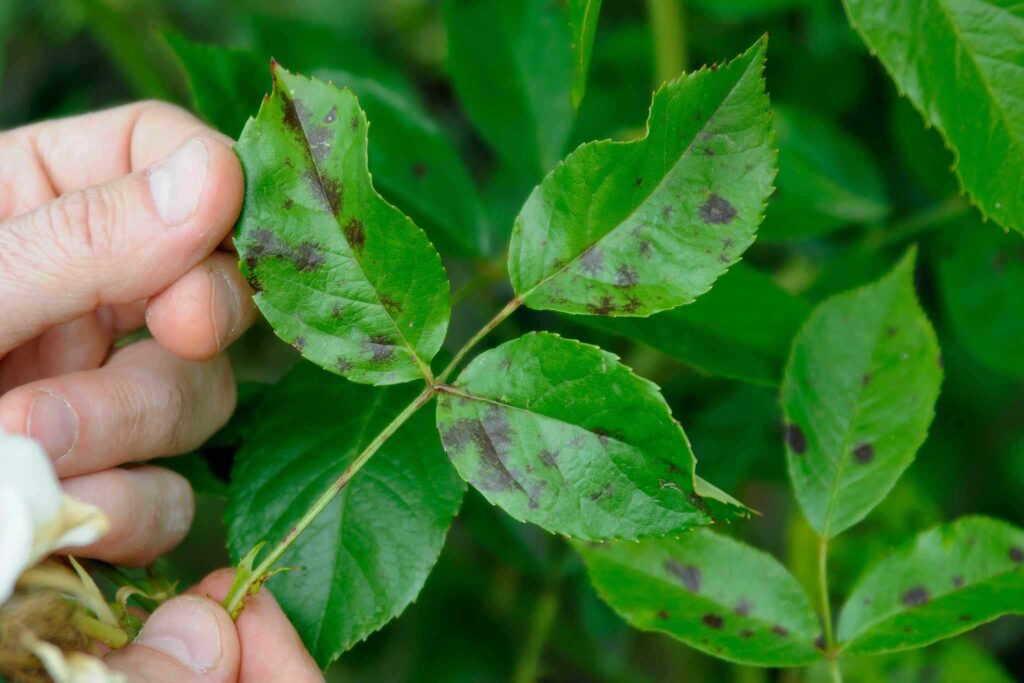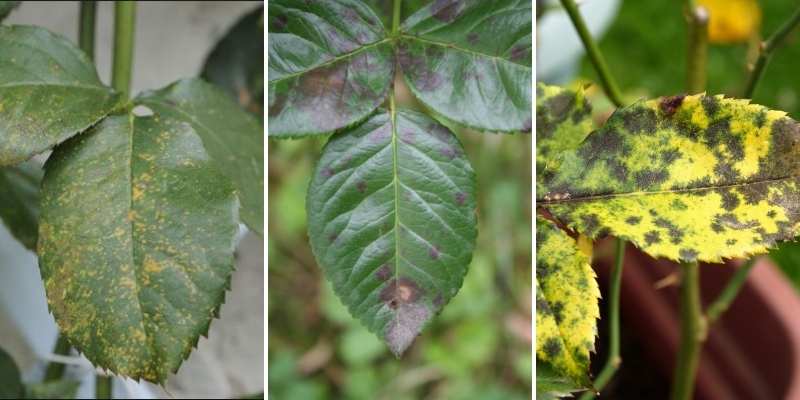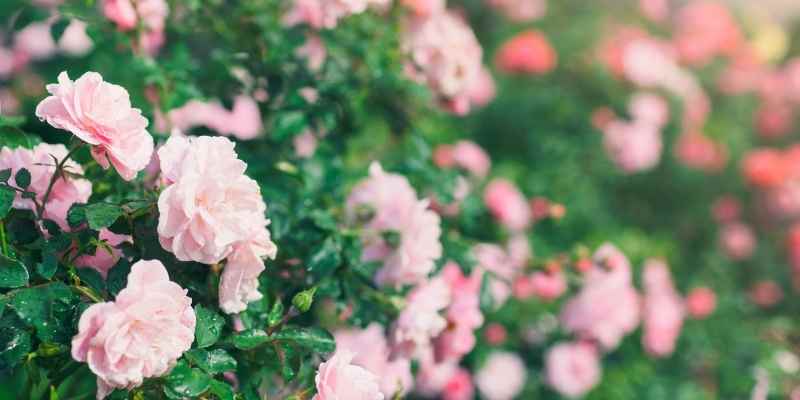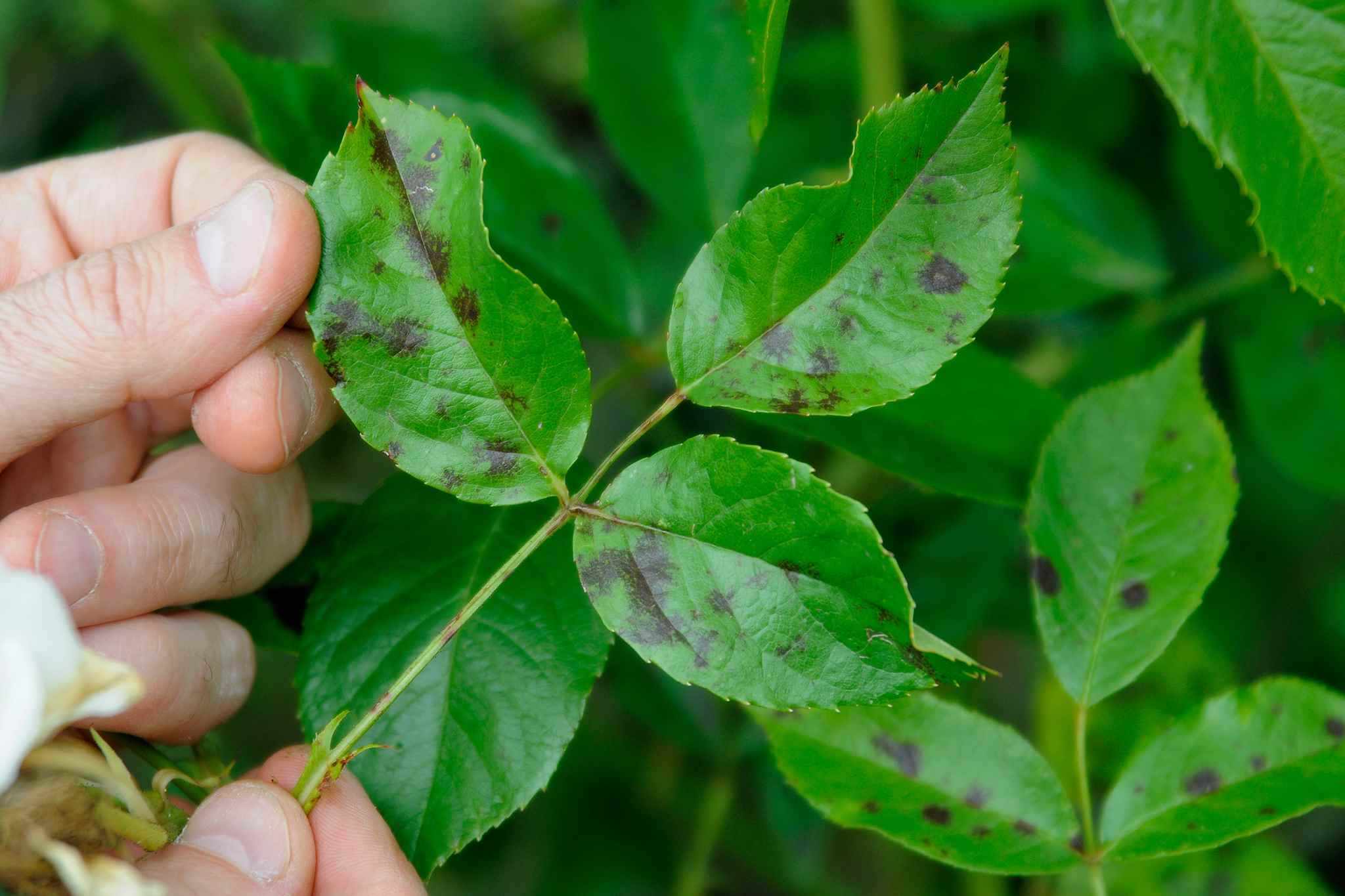
Roses are often spotted or ugly at the end of summer, but is this really a problem for their development? Do these spots prevent them from flowering and finally, is it that important to have immaculate foliage? Are the stains dangerous for the rosebush or should nature take its course? We tell you everything.
What exactly are all these stains?
There are many cryptogamic diseases of roses, but 4 main ones can be identified:
- Rust : This disease appears as small rust-colored dots on the upper side of the leaves and pustules on the underside. Rust is favored by a hot and humid environment in a confined atmosphere;
- Powdery mildew or rose powdery mildew : a white felt coats the leaves and buds of the rose bush. Powdery mildew appears in spring and summer when it is hot and relatively humid. But the powdery mildew attack is also favored by an episode of drought after a rainy season;
- Marsonia : this disease is characterized by small blackish spots, often bordered by a yellow halo on the old foliage. Here too, heat and humidity are favorable to the development of marsonia;
- Botrytis : another cryptogamic disease that appears on our roses in hot and humid weather. Botrytis is characterized by “pitting” on the petals which wither and then become covered with gray felt.

Is it serious, doctor?
It doesn’t matter at all! It’s even rather normal when it’s hot and humid , so commonly in late spring and summer. It’s also quite normal for roses to look a little tired and sick after giving us a whole season of flowers: they have given a lot and are therefore more susceptible to disease .
Also, in the case of rust and marsonia, it is the old leaves that are affected. Young foliage normally remains quite healthy. Botrytis and powdery mildew, although impressive, are only rarely detrimental to the rosebush. In summary, these small inconveniences that are these diseases are mainly only aesthetic if the rosebush is not entirely affected.
Let’s keep in mind that a perfect rosebush, without spots and without deformities, does not exist (or else it is made of plastic!)! In the garden as elsewhere, let’s not be too manic! And let the rosebushes take care of their little business on their own.
How do you keep roses healthy?
The ideal is to work upstream according to the old adage: “prevention is better than cure”. Here are a few tips :
- Give your rose a good start: choose the rootstock adapted to your soil (in calcareous soil, take it grafted on Rosa canina , for all other soils, Rosa laxa or multiflora for example), plant it in the sun , bring a little manure when planting and compost, plant at the right time (outside periods of frost and strong heat waves) and remember to praline the roots ;
- Do not keep them in a pot for too long : a rose kept in a pot is more susceptible to disease. Indeed, the substrate ends up being exhausted, the rose bush is hungry and less resistant to fungal (and other) attacks. Fortunately, once planted in the garden, everything quickly returns to normal;
- Prune your roses so that the bush remains airy . Do this at the end of winter for everbearing roses, after flowering for non-everbearing roses, unless you prefer to prune them in the fall or practice Christmas pruning . Keep the most beautiful branches and remove those that cross. And regularly disinfect your cutting tools;
- Feed your roses… but not too much: there is no need to boost them with fertilizer, but a good supply of manure at the end of winter at the foot of your rose bush will provide it with enough food so that it can flower and prosper in the best conditions ;
- Choose varieties known for their vigor and their resistance to disease : in particular roses with the ADR label, a German label, the most demanding in the world for roses.

Even if it is not serious in the vast majority of cases, a rosebush can be seriously affected by these different cryptogamic diseases. In these cases, you should take matters into your own hands.
Rust
- As a preventive measure: Spray a diluted decoction of horsetail every 3 weeks and add potassium fertilizer once a year. Indeed, rust develops more during a potassium deficiency;
- As a remedy: Remove the affected leaves then treat with a sulfur-based fungicide .
The Marsonia
- As a preventive measure: Regularly spray a decoction of horsetail during the growing season of the rosebush (between April and October);
- As a remedy, pick up on the ground and remove the affected leaves from the rosebush, then eliminate them! Apart from that, only preventive treatments are effective;
Powdery mildew
- As a preventive measure, spray solutions of biostimulants (or elicitors) in order to trigger a plant defense reaction in the absence of real aggression;
- As a curative, treat with a sulfur-based fungicide ;
Botrytis
- As a preventive measure, simply grow your roses in the sun and avoid excessive humidity on the flowers and leaves;
- As a cure, if the infection turns out to be dramatic, only the elimination of your rosebush without further ado will be effective.
Forget the Bordeaux mixture!
Bordeaux mixture is a fungicide based on copper and lime used since the end of the 19th century. Very effective against all forms of fungal diseases, this fungicide has long been considered a natural and environmentally friendly treatment. According to the latest research, however, it is not without risk for soil life and biodiversity in general.
The copper contained in the Bordeaux mixture will eliminate fungi without distinguishing between “good” and “bad”, but will also eliminate a good part of the bacteria beneficial to the life of the soil and plants, as well as earthworms. However, this soil life is essential for the creation of humus through the decomposition of organic matter. Add to this that copper sulphate in excess can have repercussions on human health: reduced fertility, repercussion on the growth of the fetus, alteration of certain organs such as the liver and the lungs. In short, let’s definitely forget the Bordeaux mixture!

